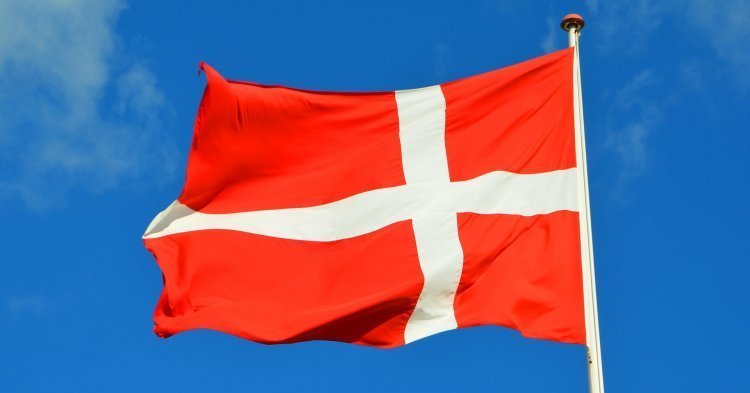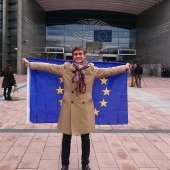A minority government
In the political history of Denmark, the absence of a majority in the Folketing, even with a coalition, is a regularity. We need to go back to 1993 and the centre-left government of Poul Nyrup Rasmussen to get close to a majority government. The outgoing government of the centre-right Lars Løkke Rasmussen, however, stands out as having a particularly weak coalition. Of the 179 MPs, his centre-right coalition only has 53 MPs.
This fragility follows from the unprecedented results of the previous legislative elections in 2015. Indeed, despite the highly mediatised collapse of the governing left-wing coalition, the Social Democrats took the first place by gaining three seats. The centre-right Venstre party of Rasmussen only came third, having lost 13 seats.
But the big surprise came from the extreme right. Indeed, the Danish People’s Party (DF) confirmed its good health after the surprise victory in the 2014 European elections, marked by a campaign hostile towards immigrants, won with almost 27% of the votes. (The Danish People’s Party had refused to ally with the French National Front at the European level, evoking the “antisemitic and homophobic” character of the French party.) With more than 20% of votes in the 2015 legislative elections and 37 seats, DF became the second-biggest political force in the country.
After these very contradictory results, the formation of a government promised to be difficult. With the defeat of their left-wing allies, the Social Democrats were forced to throw in the towel. Nonetheless, Kristian Thulesen Dahl, the leader of the Danish populists, created a surprise by renouncing the post of Prime Minister, believing that he would have more influence outside the government.
So the job fell in the hands of Rasmussen, who had already headed the government between 2009 and 2011, and who had come third in the 2015 election. Having failed to form a coalition, he governed alone for one year, with only 34 MPs. However, he received confidence and supply from the right-wing bloc, composed of the Danish People’s Party, the Liberal Alliance and the Conservative People’s Party. The two latter parties, however, ended up joining the government after a stormy debate on a finance law that in the end was revised. After this, the government has consisted of 53 MPs out of 179 participating in the policy-making of the government.
The left’s campaign to siphon the right
The latest surveys are good for the Social Democrats, and more broadly for the left-wing bloc, whilst the right-wing bloc has difficulties in mobilising, burdened by the populist DF’s fall in the polls. The Social Democrats, in the vein of the British Labour, Italy’s Democratic Party, and the Spanish Socialist Workers’ Party, have made a turn to the left concerning their economic policy.
Nevertheless, concerning the highly sensitive subject of immigration, the centre-left party has made the choice to align their position with that of the Danish People’s Party (DF). Following along the discourse of the populists, this strategy at the same time torpedoes perspectives of an alliance with other parties of the left-wing bloc which are uninclined to support policies hostile to immigration.
The voters of the Danish People’s Party are also being courted by new extreme-right formations that have appeared since 2015, with even more radical positions than DF’s, like the proposal to deport all Muslims from Denmark, advanced by the leader of the Stram Kurs (Hard Line) party.
Moreover, the Danish People’s Party has been engulfed in a financial scandal. At the heart of the affair, in the news in 2016, was the MEP Morten Messerschmidt who allegedly diverted European public funds to financing his book that was published at the time of the European elections. He was subsequently dismissed from the party. Judicial problems had also pushed another MEP, Rikke Karlsson, to leave the party in 2015.
As such, DF lost a half of its representatives in the European Parliament during the 2014 – 2019 term. The centre-right party in power, for its part, had to make numerous compromises to cement its coalition. Moreover, more generally the voters seem to be punishing the right-wing bloc for the multiple austerity measures taken since the financial crisis of 2008.
As a tactic to avoid making the European elections a referendum for or against the governing party, Prime Minister Rasmussen decided to leave a week between the European and the national legislative elections. The outgoing government also needs to reckon with Faroese and Greenlandic independence movements, whose supporters got three of the four seats allocated to these territories in the 2015 parliamentary elections. This is despite the fact that the April 2018 referendum on a new Faroese constitution that would have foreseen consultation with the inhabitants on the question of independence was cancelled at the last minute, because of disagreements between parties.
European elections as a warning
Like in most European countries, the big winner of the EU elections was the turnout. It rose by 11% in Denmark, reaching 67%. In this case, this mobilisation benefited traditional parties. Thus, the governing party Venstre won the elections with almost 23% of votes and three seats, improving its 2014 score by seven percentage points. This good result is auspicious for the Prime Minister, who can now await the legislative election day with a little more calm. The Social Democrats remained stable around 21% and kept their three seats.
The surprise was the humiliation endured by the populist party. Having won the elections in 2014 with more than 26% of the votes, the Danish People’s Party collapsed by 16 percentage points, barely reaching above the symbolic threshold of 10% and losing three of its four seats. The strategy of siphoning, followed by both the Social Democrats and the centre-right, seems to be bearing fruit.
To sum up, if the extreme-right seems to be retreating in Danish polls, it’s because it has succeeded at infusing the political debate, leading to break-up of the party system, and imposing not only its pet topics (above all immigration), but also its positions on traditional parties that trust these strategies to reconquer power. The possible victory of the Social Democrats and the left-wing bloc on 5 June could be an illusion as regards Danes’ attachment to the classic values of the Left.



Follow the comments: |
|
